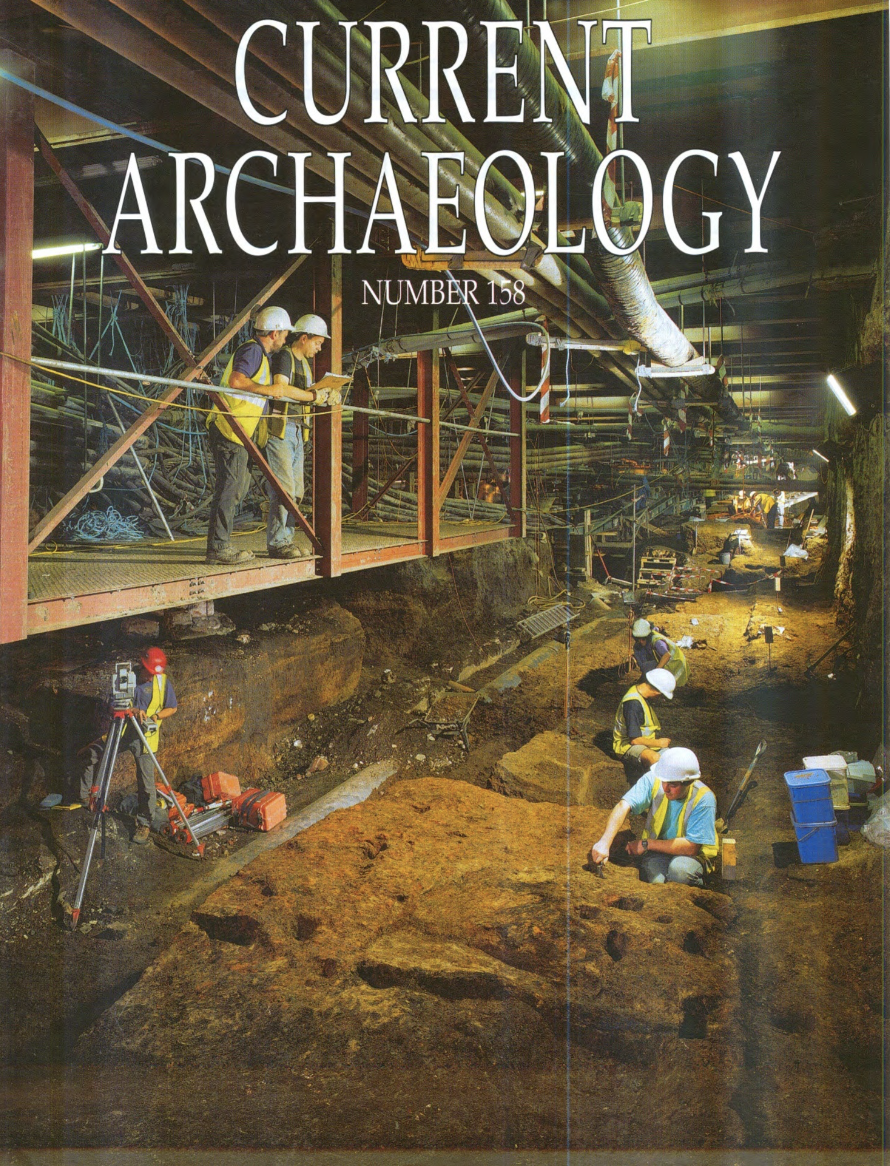Over the past decade, archaeology in London has been booming. Recent work by MoLAS – The Museum of London Archaeology Service, has uncovered many major sites and so this special issue is devoted to London, and the new ideas about its origins.
At Regis House, for instance, we can see the very first stages in the construction of the port of London. The site lies adjacent to London Bridge, and the first revetment can be dated precisely to AD 52 at the very beginning of the city’s foundation. Only eight years later, the infant city was destroyed by Boudica and here we can trace the rebuilding – how soon was it rebuilt, and by whom.
Across the river in Southwark, development also began early. The approach road to the bridge was built and a row of workshops laid out in time for them to be burnt by Boudica. Did she burn Southwark as well as London?
Perhaps the most complex archaeological project ever carried out in this country is the site of No 1 Poultry opposite the Bank of England, a keysite meticulously excavated as the buildings were going up. What was found in the 8 metres of stratification? We follow the story blow by blow from the earliest Romans through to the establishment of one of the first great medieval trading houses in the City.
When the Romans departed, London was abandoned, and a new trading city sprang up two miles to the west in the Covent Garden area.
Now a major excavation has taken place in advance of the Royal Opera House extension. What did a great Saxon city look like?
In 886, following the Viking raids, King Alfred refounded London, abandoning the old town, the” Aldwych”, and moved back within the protection of the Roman Walls. At Bull Wharf down on the foreshore we get hints of a rather grisly ritual that took place shortly before the reoccupation and the first hint of the trading shore afterwards.
This issue depends entirely on the work of MoLAS – The Museum of London Archaeology Service and we interview Simon Thurley, the new Museum Director who has some provocative new ideas about the direction in which the Museum should be moving. Our special thanks are due to Bruce Watson and his colleagues at MoLAS for their help in preparing the articles.
In fact there is so much archaeology in London that most of the Medieval work has had to be left over: there is more of London still to come in a future issue!

